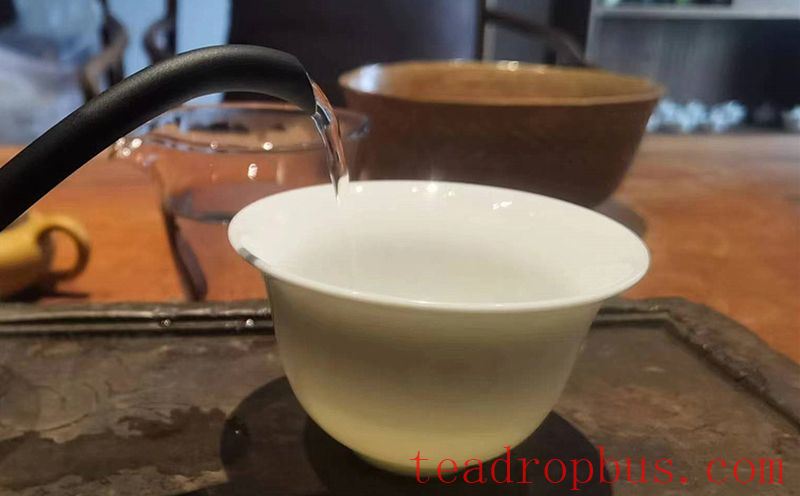A highly debated topic in the ancient tree field
We often hear people talk about single tree Tea, which is often much more expensive than ordinary ancient tree tea, but is it really better? This is a controversial and endlessly debated topic.
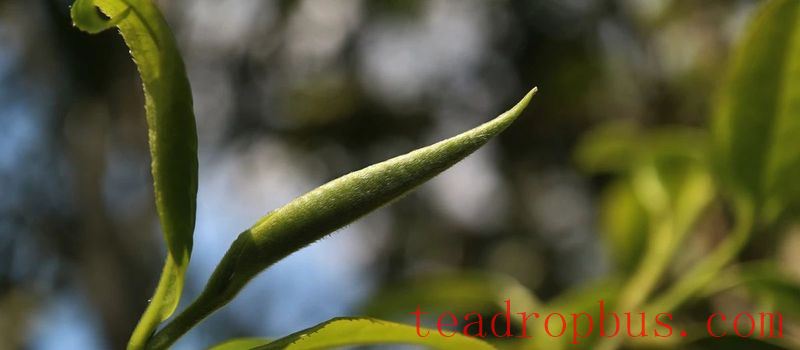
Today we will test this through an example. While one example cannot cover all situations, our analysis can help us pinpoint the key issues.
The market grading for ancient tree tea is roughly as follows:
Single tree, selective picking of ancient trees, mixed picking of ancient trees, mixed picking of large and small trees, arboreal trees, young trees…
If the tea mountain is considered high-end, it can be further divided into first-class and second-class, with ancient, old, large, medium, and small trees.
Going even further, single tree can be divided into single tree from one tree, mixed material from multiple single trees, and so on. The distinction between multiple single trees and selective picking of ancient trees is not always clear; it's just a matter of standard and quantity.
In this case, we have chosen a mixture of several single trees. Why? Because in Yunnan, tea trees are typically grown in groups, and single trees may exhibit significant variability, lacking representativeness in flavor.
Therefore, we chose a blend of several single trees. Essentially, we are discussing the difference between larger and older ancient trees compared to general ancient trees. Let's take a look at the answer through an example.
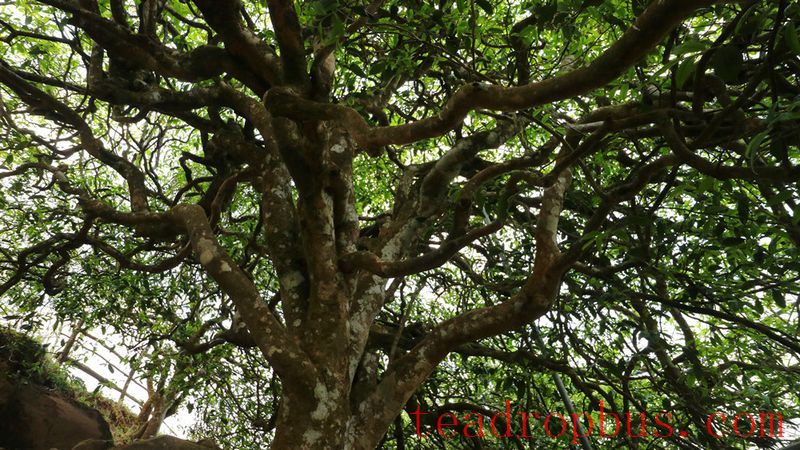
Daguan Tea Garden and Single Trees
We selected samples from Daguan Tea Garden, located in the Gaoligong Mountain Range (Tengchong), specifically single tree and mixed ancient tree teas stored for nine years in Kunming.
We chose Daguan Tea Garden because it is a variety that develops rich aroma and taste after transformation, making it conducive for comparison. Even non-experts can easily perceive the differences. If the tea isn't inherently rich, discerning the differences would require more experience and expertise.
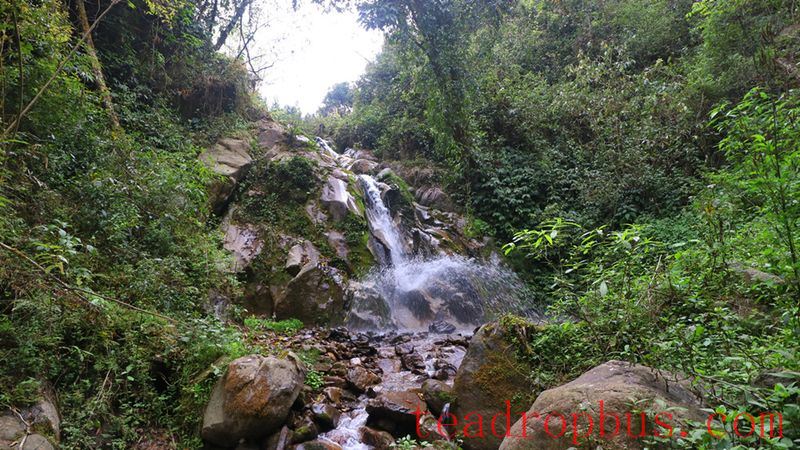
Let's briefly introduce Daguan Tea Garden. It's a typical high-altitude, high-latitude tea garden. Located in the northernmost part of Pu'er tea production areas, it is the highest latitude ancient tree region. The altitude of this tea garden is measured at 1,850 to 1,900 meters. The surrounding environment is excellent, with no human activity except for the initial processing facility. Streams flow gently, and birds chirp, creating a very pleasant atmosphere.
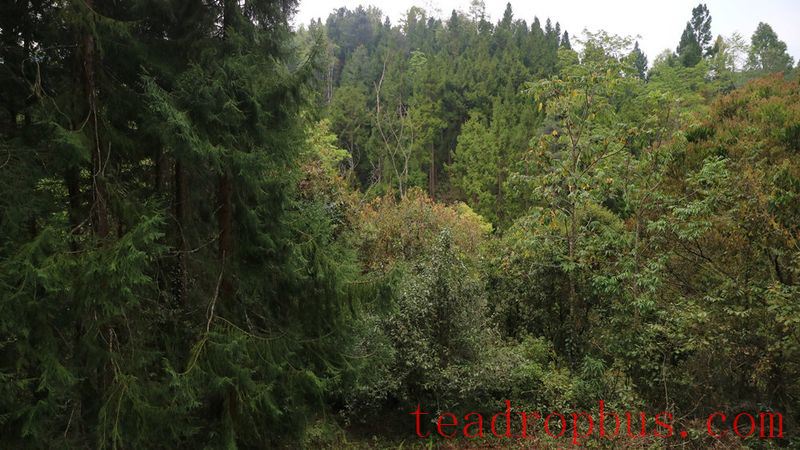
The surrounding environment also shows that the dominant vegetation is fir trees, quite different from lower latitudes. Such tea gardens often possess elegant charm and delightful aromas. Although they are not as robust and long-lasting as tropical low-altitude, low-latitude tea gardens, they are still at a level suitable for connoisseurship, where one shouldn't solely pursue robustness and longevity.
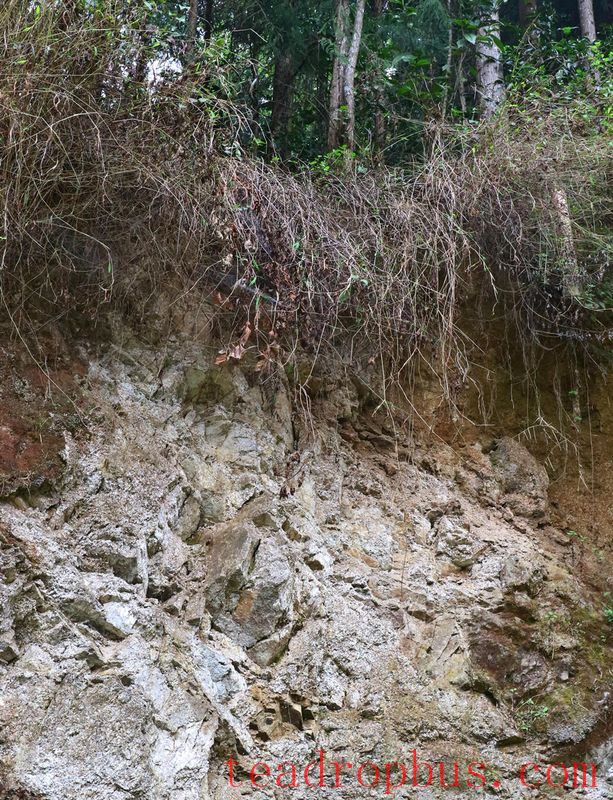
Notably, the soil is weathered rock. As the saying goes, “The best grows in rotten stones,” this type of soil often brings powerful body sensations and unique flavors. A classic example is the sheep liver soil found in Mansong. In fact, Yunnan is vast, and there are other tea gardens with similar soil types if you search diligently.
In terms of rock quality, this tea garden is similar to Wangzi Mountain, but instead of purple-red weathered rock, it is blue-gray weathered rock. In terms of body sensation and flavor, this soil type is indeed very special. Mansong has historical fame, and its body sensation is taken more seriously. Daguan Tea Garden, when experienced calmly, has a body sensation clearly surpassing that of Mansong's young trees and can compete with ancient trees. My impression is that while it falls short compared to the top-tier Mansong ancient trees, it might not lose against average Mansong ancient trees.

These tea trees don't appear particularly large at first glance, but considering factors like high latitude, high altitude, cultivated type, and weathered rock soil, their age should be considerable. If you visit Mansong, you'll see that the tree shape is vastly different, mostly due to pruning. Even if you examine the roots of Mansong ancient trees, they still fall short compared to our selected single-tree grade ancient trees.
There are many larger tea trees in high-latitude regions, but here's another important point: in high-latitude, high-altitude areas, extremely large ancient tea trees are generally not cultivated types but rather wild or transitional types. Taking various considerations into account, especially the soil factor, these cultivated ancient trees are nearly the upper limit under similar conditions.

I usually don't bother introducing these details because only around 200 kilograms of Spring Tea are produced each year, and it sells out regardless of the introduction. However, I'm mentioning them now because they are closely related to the subsequent tasting discussion. I need to work on being less lazy about sharing such information.
About brewing
This is the first article in the tasting game series, so let me briefly discuss brewing.
We start by tasting the mixed ancient trees. In the Mingshou Tang system, this is referred to as tea garden-level ancient trees, while single trees are called single tree-level ancient trees, which is more accurate.
Since this batch is pure Kunming storage, the transformation is relatively slow, although it has developed rich aroma and taste. For brewing, we can use a Gaiwan to present the flavors.
Daguan's aroma and taste are complex, so we should use purified water or natural water with a low TDS value, with purified water being the safer choice. We typically choose Nestle Pure Life. When tasting tea, it's essential to do so, akin to seeing someone without makeup. You can adjust based on personal preference when drinking.
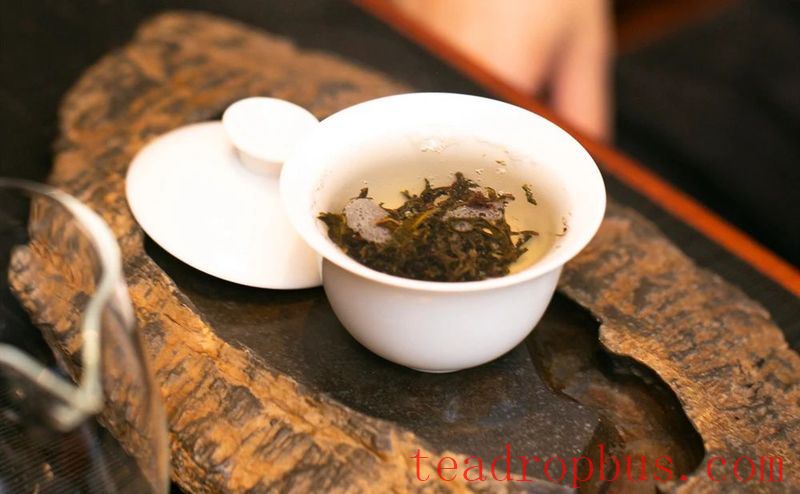
There are many ridiculous debates about brewing, which are unnecessary. What matters most is your purpose in tasting the tea.
For instance, there's a strange belief that good tea must be brewed with boiling water, as “good tea is not afraid of boiling water.” However, heat resistance is unrelated to the quality of the tea itself but is primarily influenced by processing methods and to some extent, the tree species. I can elaborate on this later.
Contrary to popular belief, when tasting tea, it's crucial to control the water temperature. This doesn't necessarily apply when simply Drinking Tea, depending on your preferences.
Aroma and taste are like a spectrum; you need to separate them to see clearly and appreciate the rich layers and beauty. If you use boiling water, everything compresses together, and many nuances are lost.
Of course, some people have naturally duller senses, with severely impaired taste and smell. That's a different matter. There's no intended discrimination; it's like some people wear glasses and others don't. It's just that there aren't glasses to assist with taste.
We chose water around 90 degrees Celsius to present the tea, which helps us fully understand its various aromas and tastes. Afterward, if you prefer the feeling of boiling water, you can adjust accordingly.
